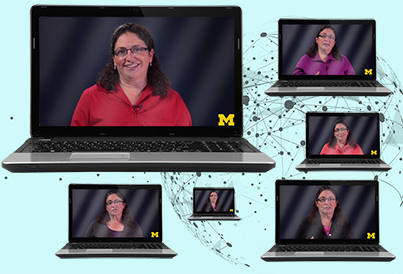Since its on-demand launch in May 2016, the Instructional Methods in Health Profession’s Education course has attracted more than 7,100 participants, the vast majority – nearly two thirds – from outside the United States. It’s an impact that creator Caren Stalburg, an Associate Professor of Learning Health Sciences and Obstetrics & Gynecology, couldn’t have imagined when she first envisioned the Massive Open Online Course (MOOC) several years ago.

“It’s mind-blowing and really humbling to see the impact, because this was a passion project for sure,” said Stalburg, MD, MA. “My producer and I spent a lot of our Sunday evenings in the basement of the North Ingalls Building recording these things, and I’m grateful people are taking advantage of it.”
Users from more than 170 countries have engaged in the course, logging in from India, Egypt, the United Arab Emirates, the Philippines, and elsewhere. The latest faculty to take up the MOOC are a large cohort from the University of Guyana, in South America, who enrolled as a group in November at the urging and support of the Guyanian Ministry of Health. About 35% of the course enrollees hail from low- to middle-income countries, Stalburg said, resource-limited regions where online MOOCs offer affordable means to help build much needed capacity.
“People chose to be in an academic environment because they like engaging learners and opportunities to teach, but the truth is we are rarely taught how to teach,” she said. “I happen to have an MA in higher education, but not everybody has that option. Still, they can benefit from understanding teaching and learning theory, and thinking about best practices in assessment and evaluation.”
The seven-module course she developed covers dozens of topics including learning theory, instructional design, active learning in large- and small-group settings, teaching with data, and more. Stalburg is featured in all of the videos. “I was in Ethiopia recently for a different project when I was stopped by someone who said, ‘I cannot believe that you are physically here! I‘ve been watching you on video!’ So that is a pretty unique experience,” she said.
Learners can move through the modules at their own pace but also engage with others – at their own institution or around the world – who are also enrolled.
“We worked really hard to create this so I am really glad it has value for people. That’s the reward,” Stalburg said. “The downstream impact can be so big. People are learning to teach others to be healthcare professionals, so all of those folks will be able to go out and improve global health.”
